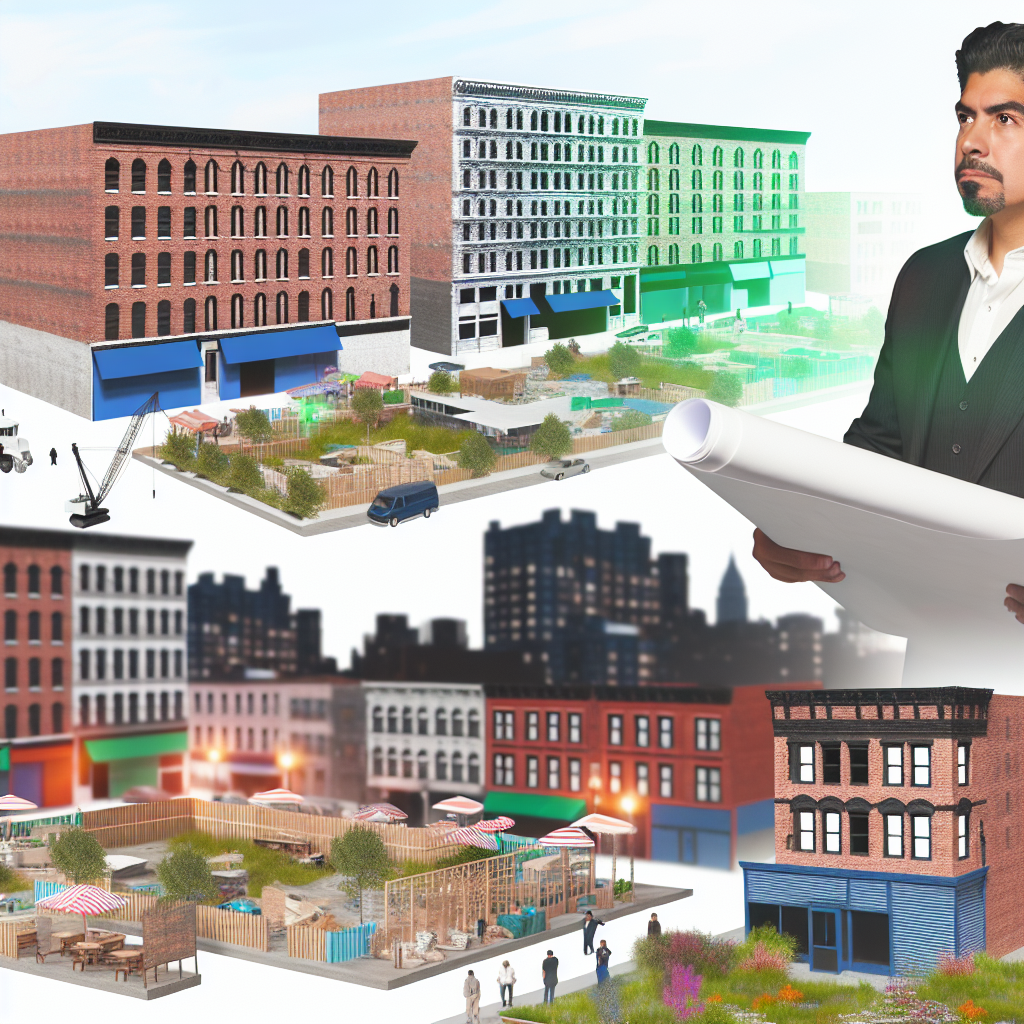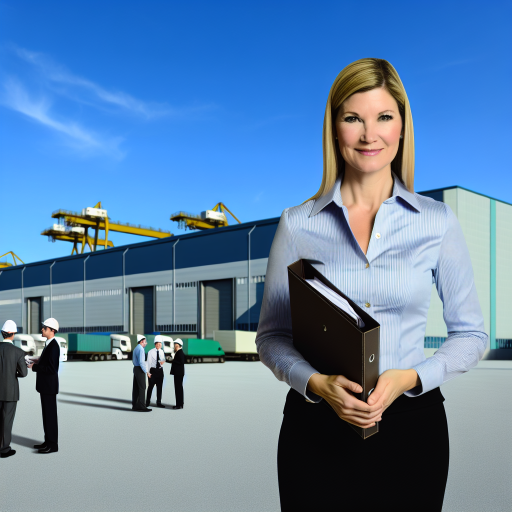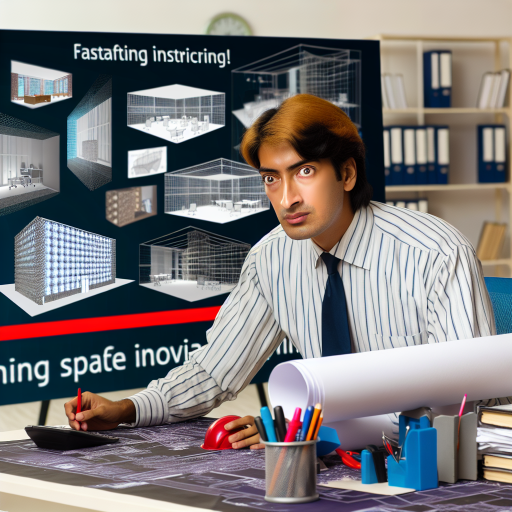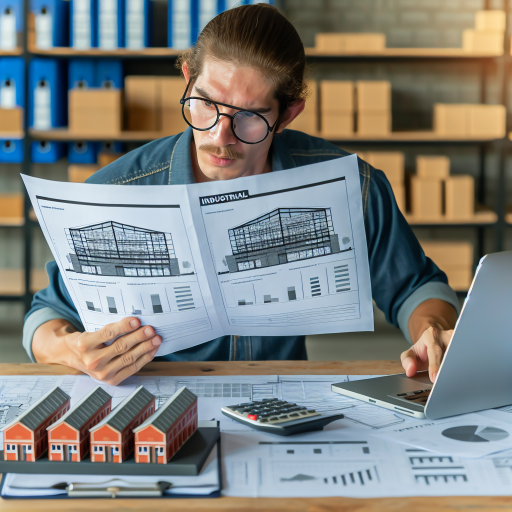Introduction to Urban Renewal Projects and Their Importance
Urban renewal projects rejuvenate neglected areas in cities.
These initiatives aim to improve infrastructures, such as roads and parks.
Furthermore, they enhance public spaces and housing opportunities.
Interestingly, urban renewal often attracts new businesses and investments.
Thus, cities see economic growth and increased foot traffic.
Benefits of Urban Renewal Projects
Urban renewal projects offer numerous advantages.
They promote community engagement by involving local residents in planning.
Additionally, these projects often prioritize sustainable practices.
Green spaces and energy-efficient buildings create healthier environments.
Consequently, urban areas transform into more desirable places to live and work.
Challenges Faced in Urban Renewal
Despite their benefits, urban renewal projects face challenges.
One significant issue is displacement of local residents and businesses.
Moreover, securing funding remains a critical hurdle.
Balancing modernization with historical preservation poses additional complexities.
Thus, effective planning and community involvement are essential.
Transform Your Real Estate Decisions
Unlock personalized real estate insights crafted just for you. Get actionable advice designed to amplify your success.
Get StartedCase Studies of Successful Urban Renewal
Several cities showcase successful urban renewal efforts.
For instance, the revitalization of Detroit has gained national attention.
This project transformed abandoned areas into thriving neighborhoods.
Moreover, Brooklyn, New York, revitalized its waterfront, attracting visitors.
These examples highlight the potential impact of thoughtful urban renewal.
Historical Context: The Evolution of Urban Renewal
Origins of Urban Renewal
Urban renewal emerged in the mid-20th century as a response to city decay.
Initially, it aimed to revitalize declining urban areas through demolition and reconstruction.
Many cities faced issues like poverty and infrastructure deterioration.
Government programs sought to address these challenges through urban redevelopment.
1960s and 1970s: A Shift in Focus
During the 1960s, urban renewal faced criticism for its approach.
Advocates began to emphasize community involvement and preservation of cultural heritage.
Consequently, many cities changed strategies to incorporate public input.
This shift marked a significant evolution in urban planning practices.
Modern Urban Renewal Approaches
Today, urban renewal projects focus on sustainable development.
Showcase Your Real Estate Business
Publish your company profile on our blog for just $200. Gain instant exposure and connect with a dedicated audience of real estate professionals and enthusiasts.
Publish Your ProfileThey prioritize mixed-use properties that combine residential, commercial, and public spaces.
Furthermore, cities now consider environmental impacts and social equity.
This holistic approach aims to create vibrant, livable communities.
Case Studies of Successful Urban Renewal
Several cities exemplify effective urban renewal strategies.
For instance, San Francisco’s Mission District revitalization combines housing and art spaces.
Similarly, Detroit’s efforts have transformed abandoned buildings into thriving businesses.
These examples showcase the positive impacts of thoughtful urban renewal initiatives.
Key Components of Successful Urban Renewal Projects
Community Engagement
Effective urban renewal projects begin with community engagement.
Local residents should have a voice in planning and execution.
This approach builds trust and fosters collaboration.
Community forums provide valuable feedback and ideas.
Additionally, surveys can help gauge public opinion.
Inclusive Planning
Inclusive planning considers diverse community needs.
Urban planners should prioritize equitable access for all demographics.
This includes affordable housing and public spaces.
Furthermore, attention to transportation is vital.
Accessibility enhances connectivity throughout the area.
Sustainable Development
Sustainable development practices are central to urban renewal.
These practices minimize environmental impact and promote efficiency.
Utilizing green technologies reduces energy consumption.
Moreover, implementing green spaces supports biodiversity.
Such initiatives improve the quality of urban life.
Economic Viability
Economic viability is crucial for successful urban projects.
Urban renewal should stimulate local economies and create jobs.
Business incentives can attract new investments.
Additionally, partnerships with local businesses enhance support.
Long-term planning ensures financial sustainability.
Adaptive Reuse of Spaces
Adaptive reuse transforms existing structures for new purposes.
This approach preserves historical value while modernizing spaces.
Revitalizing old warehouses can attract innovative businesses.
Showcase Your Real Estate Business
Publish your company profile on our blog for just $200. Gain instant exposure and connect with a dedicated audience of real estate professionals and enthusiasts.
Publish Your ProfileConsequently, it nurtures a unique cultural identity.
Furthermore, this method reduces waste and resource consumption.
Gain More Insights: The Benefits of Adaptive Reuse in Commercial Real Estate Development
Case Studies: Notable Urban Renewal Projects and Their Impact on Commercial Properties
Revitalization of Downtown Denver
The Denver Union Station project transformed a historic transit hub into a vibrant commercial space.
It now features shops, restaurants, and offices, attracting both locals and tourists.
This revitalization boosted property values in the surrounding area significantly.
The project generated thousands of new jobs and enhanced the local economy.
Transformation in the Financial District of San Francisco
San Francisco’s Transbay Transit Center has redefined urban living and working.
This development connected multiple transit options and created a public park.
Additionally, it incorporated residential and commercial spaces, encouraging urban density.
The project has sparked interest from tech companies seeking modern office spaces.
Regeneration of the River Walk in San Antonio
The San Antonio River Walk is a prime example of urban renewal revitalizing commercial properties.
Extensive landscaping and pedestrian-friendly walkways attracted new businesses.
Restaurants, boutiques, and art galleries flourish along the scenic waterways.
This urban renewal has increased tourism and improved the local economy.
The High Line in New York City
New York City’s High Line is an elevated park that repurposes a former railway line.
This unique public space sparked interest in adjacent commercial developments.
It has led to the creation of numerous shops and restaurants that thrive on foot traffic.
The High Line illustrates the potential of green spaces to enhance property values.
Revamp of Detroit’s Corktown Neighborhood
Corktown, Detroit’s oldest neighborhood, is undergoing significant revitalization.
Local initiatives have spurred renovations of old factories into commercial spaces.
This revival attracted startups and established companies alike, fostering innovation.
The transformation has breathed new life into the local economy and community.
Impact in the Arts District of Los Angeles
Los Angeles’ Arts District has evolved into a hub for creative industries.
New gallery spaces and artist studios have emerged, drawing cultural tourism.
This urban renewal has significantly increased real estate values in the area.
Moreover, it has cultivated a vibrant local community centered around the arts.
Delve into the Subject: Why Adaptive Reuse is the Future of Commercial Real Estate Development
Challenges and Criticisms of Urban Renewal Initiatives
Displacement of Communities
Urban renewal projects often lead to the displacement of existing communities.
Residents frequently face eviction due to rising rents and property values.
Showcase Your Real Estate Business
Publish your company profile on our blog for just $200. Gain instant exposure and connect with a dedicated audience of real estate professionals and enthusiasts.
Publish Your ProfileSuch displacements can fracture established neighborhoods and social networks.
Community members frequently express concerns over being pushed out of their homes.
Loss of Historical and Cultural Identity
Restoration initiatives sometimes overlook the historical significance of neighborhoods.
Developers often prioritize profit over preserving cultural landmarks.
This oversight can lead to a homogenization of the urban landscape.
Residents may feel that their heritage and identity disappear amid new developments.
Economic Disparities and Gentrification
Gentrification often accompanies urban renewal efforts, causing economic disparities.
Wealthy newcomers may move in, pushing out less affluent residents.
This shift can exacerbate social tensions within the community.
Local businesses may struggle to survive amidst changing demographics.
Environmental Concerns
Urban renewal can sometimes harm the existing environment.
New construction often disrupts local ecosystems and green spaces.
Additionally, traffic and pollution may increase as areas become more developed.
Community activists frequently call for environmentally sensitive planning.
Inadequate Resident Involvement
Many urban renewal processes lack adequate input from local residents.
This absence of community engagement can result in projects that do not meet local needs.
Residents often feel marginalized and unheard during decision-making processes.
Increasing transparency and participation is crucial for effective urban planning.
Find Out More: Why Co-Working Spaces Are Becoming the Future of Commercial Real Estate

Economic Benefits: How Urban Renewal Drives Business Growth
Increased Property Values
Urban renewal projects elevate property values in revitalized areas.
This increase attracts new businesses seeking profitable opportunities.
As property values rise, local governments benefit from higher tax revenues.
Investors are more inclined to finance new ventures in thriving neighborhoods.
Job Creation
Urban renewal significantly boosts job creation in local communities.
New developments require skilled workers for construction and maintenance.
Local businesses also hire staff to meet increased demand.
As employment rises, consumer spending in the area grows.
Attracting New Businesses
Revitalized urban areas become appealing for various businesses.
Companies are drawn to energetic and attractive locales.
Urban renewal initiatives often provide incentives for startups.
Showcase Your Real Estate Business
Publish your company profile on our blog for just $200. Gain instant exposure and connect with a dedicated audience of real estate professionals and enthusiasts.
Publish Your ProfileThese grants and loans help mitigate financial risks for new ventures.
Enhanced Infrastructure
Improved infrastructure is a key aspect of urban renewal projects.
Better roads, public transportation, and utilities support business activities.
Accessible locations attract both customers and employees.
Investments in infrastructure lead to increased economic activity.
Community Engagement and Support
Urban renewal projects foster community involvement and feedback.
Residents often collaborate with local governments to shape developments.
This engagement helps align projects with community needs and desires.
A supportive community enhances business success and sustainability.
Long-Term Economic Sustainability
Urban renewal contributes to long-term economic health in cities.
Sustainable practices ensure that developments remain viable over time.
They often prioritize green spaces and energy-efficient designs.
As a result, restored areas remain attractive for generations.
Find Out More: Why E-Commerce Growth is Reshaping Commercial Real Estate in Retail Markets
Sustainability Practices in Urban Renewal and Their Effect on Commercial Spaces
Promoting Energy Efficiency
Energy-efficient designs play a significant role in urban renewal projects.
These practices reduce operational costs for commercial properties.
Building upgrades often include better insulation and energy-efficient windows.
As a result, businesses experience lower utility bills and enhanced comfort.
Moreover, energy-efficient buildings attract environmentally conscious tenants.
Utilizing Renewable Resources
Urban renewal projects increasingly incorporate renewable energy sources.
Solar panels and wind turbines often appear on commercial rooftops.
These installations generate clean energy, reducing dependency on fossil fuels.
Consequently, businesses can market themselves as sustainable enterprises.
Encouraging Green Design Principles
Green design principles foster sustainable urban environments.
Landscaping often focuses on native plants that require less water.
Incorporating green roofs and walls enhances air quality and biodiversity.
Furthermore, these green spaces offer pleasant environments for customers.
Implementing Waste Reduction Strategies
Effective waste management is crucial in urban renewal initiatives.
Recycling programs reduce waste sent to landfills significantly.
Businesses adopt composting practices to utilize organic waste efficiently.
Showcase Your Real Estate Business
Publish your company profile on our blog for just $200. Gain instant exposure and connect with a dedicated audience of real estate professionals and enthusiasts.
Publish Your ProfileThis commitment to waste reduction improves public perception and enhances brand reputation.
Developing Mixed-Use Spaces
Mixed-use developments promote sustainable urban living.
These spaces combine residential, commercial, and recreational facilities.
Thus, they encourage walking and reduce reliance on cars.
Additionally, they foster community interaction and social cohesion.
Long-Term Sustainability Goals
Urban renewal projects focus on long-term sustainability outcomes.
They aim to create resilient communities that can adapt to future challenges.
This vision includes climate adaptability and economic viability.
By prioritizing sustainable practices, urban renewal can benefit all stakeholders.
Community Engagement: Involving Local Stakeholders in the Renewal Process
The Importance of Community Input
Community input drives the success of urban renewal projects.
Local stakeholders bring valuable insights to the planning process.
Their involvement fosters a sense of ownership among residents.
This ownership often leads to stronger community ties.
Building Effective Communication Channels
Establishing clear communication is essential for engagement.
Organizing regular town hall meetings facilitates open dialogue.
These meetings allow residents to share their concerns and ideas.
Furthermore, utilizing social media platforms broadens outreach efforts.
Informative newsletters can keep the community updated on project progress.
Collaborative Planning Workshops
Workshops enable hands-on involvement from community members.
Participants can brainstorm ideas and address challenges collectively.
Facilitators can guide discussions to ensure all voices are heard.
Such collaboration can lead to innovative solutions for local issues.
Incentives for Community Participation
Offering incentives encourages active participation in the process.
Consider hosting community contests to generate interest and ideas.
Additionally, providing small stipends for attending meetings can boost engagement.
Recognizing contributions publicly cultivates a supportive environment.
Feedback Mechanisms for Continuous Improvement
Implementing feedback mechanisms enhances project adaptation.
Regular surveys can gauge community sentiment about ongoing initiatives.
Listening to feedback allows for modifications based on stakeholder needs.
A responsive approach builds trust between organizers and the community.
Showcase Your Real Estate Business
Publish your company profile on our blog for just $200. Gain instant exposure and connect with a dedicated audience of real estate professionals and enthusiasts.
Publish Your ProfileCelebrating Milestones Together
Celebrating milestones strengthens community bonds.
Organizing events that showcase project achievements fosters pride.
Such celebrations invite further community involvement in future phases.
Ultimately, these actions create a vibrant sense of community through renewal.




